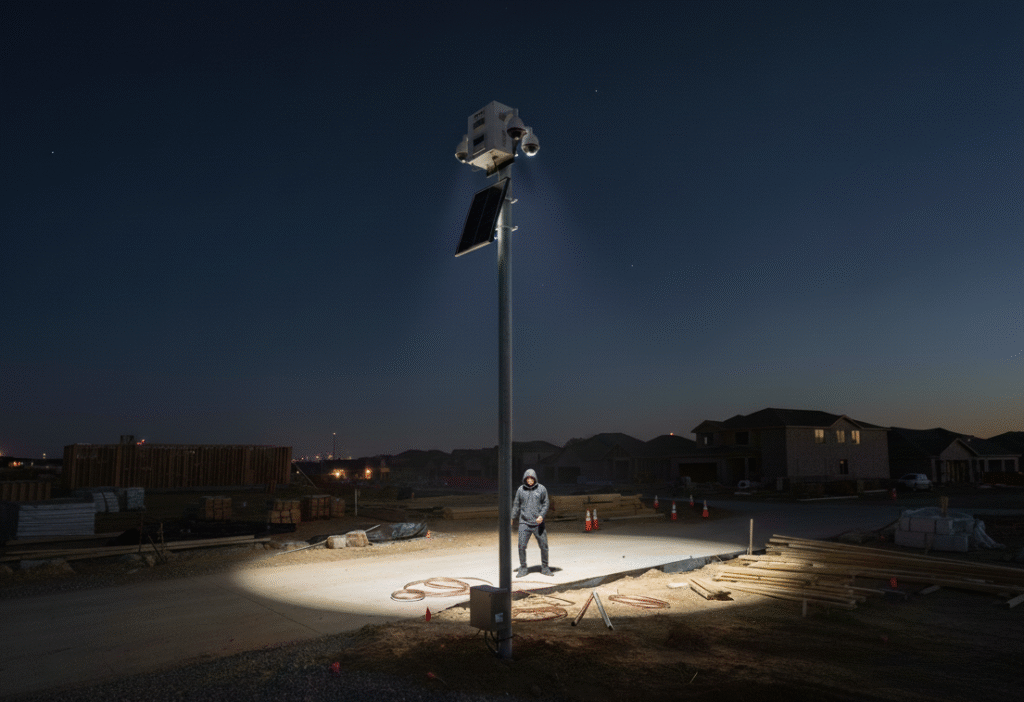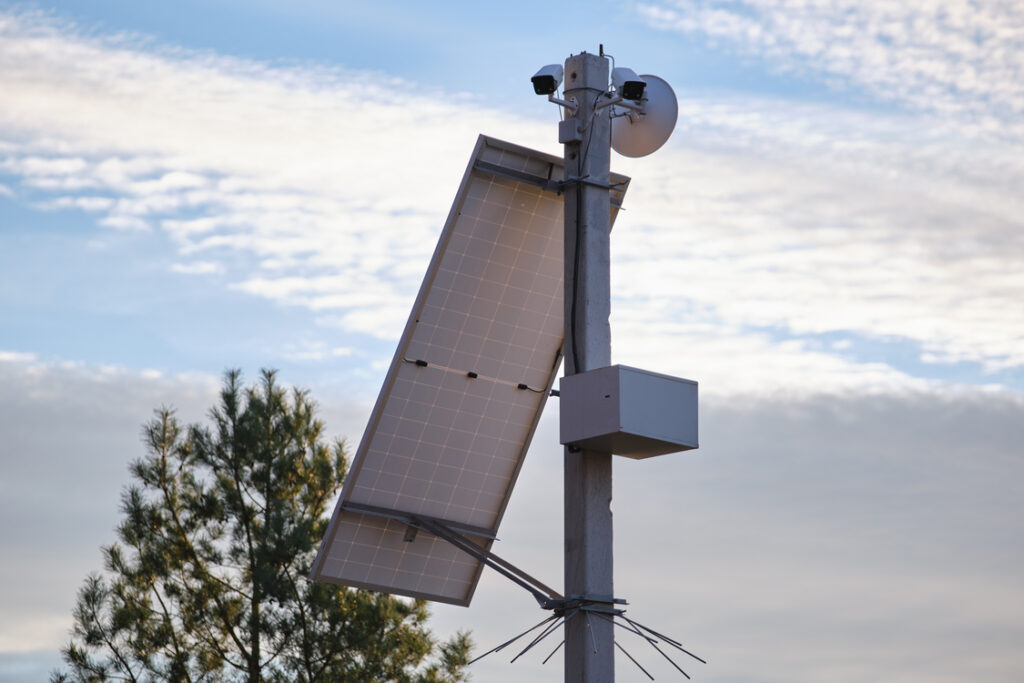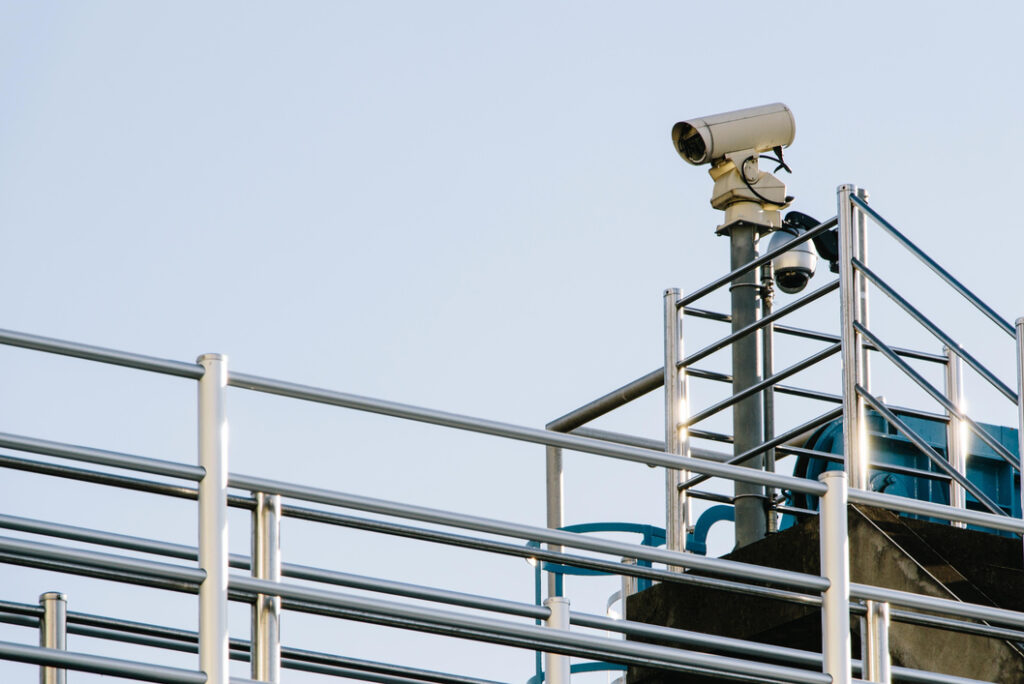Weather happens. But the difference between a weather delay that simply costs you a few extra days and one that costs you tens of thousands in liquidated damages lies entirely in documentation. When a construction project is impacted by unusually severe weather, abnormal precipitation, extreme temperatures, or other force majeure events, contractors face a critical moment: prove the delay was beyond their control, or absorb the financial penalty. The challenge isn’t whether the weather occurred—it’s proving that it was sufficiently abnormal to justify a schedule extension and that it actually impacted critical path work.
General contractors who lack objective, time-stamped evidence of weather impacts and work stoppages frequently lose claims for time extensions, and worse, see liquidated damages assessed against them for delays they didn’t actually cause. Conversely, contractors with comprehensive visual documentation—live camera footage, time-lapse records, and daily site photos timestamped to weather conditions—can definitively prove the scope and impact of weather delays. For GCs managing multiple projects in varying climates, this documentation capability represents the difference between recovering from weather disruption and absorbing it as a profit loss.
Understanding Force Majeure and Weather Delays
Force majeure is a legal concept meaning “superior force”—an event or condition that neither party could have foreseen or controlled. In construction, force majeure events such as abnormal weather entitle the contractor to a change in the contract times, but not a change in contract price or any other remedy. This distinction is critical. Weather delays typically don’t result in financial compensation, only in time extensions—but those time extensions prevent liquidated damages from being assessed.
The key word here is “abnormal.” Most construction contracts anticipate that some weather disruption will occur. Contracts often include a table of anticipated weather days, and contractors are typically expected to account for a certain number of weather days or seasons in their schedules. This means you can’t claim a time extension simply because it rained. You can only claim one when weather conditions significantly exceed what could have been reasonably anticipated for your project location.
For example, typical contract language might specify that adverse weather is defined as precipitation exceeding 1.0 inch within a 24-hour period, snowfall exceeding 2.0 inches in a 24-hour period, or temperatures below 32°F or above 95°F. If your contract includes such thresholds, you have objective criteria for what qualifies. If it doesn’t, you’re working with subjective interpretations—which is where disputes arise.
The fundamental challenge in proving a weather delay is this: there is no standard in the industry for what constitutes “abnormal weather,” and what is typical versus abnormal can be subjective and open to interpretation by courts and arbitration boards. This subjectivity is where contractors lose claims. Without objective evidence showing that actual weather conditions exceeded historical norms, project owners and arbitrators may deny time extension requests entirely.
Why Weather Delay Claims Fail
Contractors lose weather delay claims for predictable reasons: insufficient documentation, failure to prove the delay impacted critical path work, and inability to show the weather was actually abnormal for the location.
Lack of Objective Weather Data
Many contractors rely on descriptions like “it rained a lot” or “it was unusually cold.” This is anecdotal. When disputes arise, owners will point to the fact that the weather occurred and ask: where’s the proof it was extraordinary? Without timestamped weather data comparing actual conditions to historical averages, you can’t win that argument.
Failure to Connect Weather to Work Stoppages
Even with documented weather events, you must prove the weather actually prevented work. To be excused from liability for delay and receive a time extension, the contractor must prove that the delay was attributed to conditions that varied substantially from normal average or reasonably expected weather and that this weather actually prevented critical path work from proceeding. Many contractors document the weather but fail to document that it prevented their crews from working. Without that connection, the weather event itself is irrelevant to the delay claim.
Insufficient Critical Path Analysis
Time extensions resulting from unusually severe weather are best proven using a CPM (Critical Path Method) schedule analysis. You must demonstrate that the work affected by weather was on your project’s critical path—the sequence of tasks controlling overall completion. If weather delayed work that had float in the schedule, it may not justify a time extension. Many contractors skip this analysis entirely, which fatally undermines their claims.
Missing Notice Requirements
Most construction contracts require notice of force majeure events in writing within specific timeframes (often within 5 days of the occurrence of the event). Failing to provide timely notice can completely bar a time extension claim, even if the weather delay was legitimate. A wholly valid claim for delay can be completely barred by failing to provide proper notice that strictly adheres to the contract requirements.
Inadequate Documentation of Mitigation
To successfully claim force majeure, you must show you took reasonable steps to mitigate the impact. If alternative solutions were available to keep the project on schedule, a force majeure claim may be denied. Without documentation showing what mitigation efforts you attempted, owners can argue you didn’t do enough to minimize delay impact.
How Visual Documentation Transforms Weather Delay Claims
This is where comprehensive camera documentation becomes transformative. Live jobsite cameras and daily time-lapse documentation create the objective evidence that converts subjective weather descriptions into defensible claims.
Timestamped Weather Impact
When weather events occur on your site, they’re captured by cameras. This creates objective proof of when conditions occurred, how long they persisted, and their severity. You can see when rain prevented concrete work, when freezing temperatures halted foundation preparation, when wind gusts made crane operations unsafe. This visual documentation, paired with weather data from official sources, creates an undeniable connection between weather events and work stoppages.
Continuous Activity Documentation
Time-lapse footage documents work activity before, during, and after weather events. If work proceeded at normal pace Monday through Thursday, then completely stopped Friday due to rain, the time-lapse shows that visually. You don’t need to argue about whether weather prevented work—the footage shows that it did. When you compare time-lapse productivity before the weather event to productivity during dry periods afterward, the impact becomes graphically obvious.
Comparison to Normal Operations
Video documentation also allows you to compare site conditions during normal operations to conditions during weather delays. If your crew typically installs 500 square feet of framing per day, and you have footage showing why that wasn’t possible during the weather event, you can quantify the delay impact. This objective comparison transforms “it was bad weather” into “weather prevented our standard productivity level.”
Critical Path Work Verification
Camera footage combined with your project schedule creates proof that weather-delayed work was actually on your critical path. You can show: this work was scheduled for these dates, this weather occurred on these dates, this work couldn’t proceed due to weather, and this work’s delay pushed back the following phases. The visual documentation connects each link in that chain.
Historical Comparison Data
To prove weather was abnormal, contractors should compare actual weather to the historical average from documented sources, such as National Weather Service records or local meteorological data. When you combine camera documentation of actual site conditions with official weather records, you create two-layer proof: the weather service says conditions were abnormal, and your cameras show the impact.
Building Your Weather Delay Documentation Strategy
- Establish a Documentation Baseline: From project start, set up a consistent documentation routine using daily photos and time-lapse cameras.
- Coordinate with Weather Data Sources: Identify official weather sources (like NOAA or local gauges) and sync your records with them.
- Document Mitigation Efforts Continuously: Record heating tents, coverings, or accelerated schedules to prove mitigation.
- Link Schedule Data to Documentation: Integrate daily camera documentation with your project schedule.
- Create Time-Lapse of Full Project Phases: Capture each phase from start to finish for indisputable records.
- Maintain Clear Records of Crew Activity: Show which crews were present each day to prove attempted work efforts.
Contract Language That Supports Documentation
Before weather delays occur, ensure your contract language supports your documentation strategy. Well-drafted contracts include standards like: “The contractor must submit a delay notice and weather data report within 48 hours of the alleged adverse event.”
Your contract should specify acceptable proof methods, including: “Weather delays shall be documented with daily site photographs, weather station data, work productivity records, and schedule impact analysis.” When you meet these expectations using jobsite camera systems, you create solid legal footing.
Also clarify whether your force majeure clause allows for cost impacts. Some contracts allow recovery for extended costs—use your documentation to support both time and cost claims (equipment rentals, extended overhead, etc.).
When Weather Meets Other Delays: The Complexity Factor
Weather delays become more complex when they occur alongside other delay factors. For instance, if an owner-caused delay pushes your critical work into a season with worse weather, you may have a compensable delay rather than a noncompensable one. If an owner-caused problem shifts the contractor’s work into a season of unfavorable weather that becomes the proximate cause of the delay, a compensable delay may result, and the additional costs may be recoverable.
Documentation becomes even more critical here. You must show: the original schedule, owner actions causing delay, revised schedule, and the resulting weather impact. Combining camera documentation with schedule analysis creates an undeniable narrative.
Best Practices for Weather Delay Documentation
- Comply with Notice Requirements Precisely: Follow your contract’s timeline exactly—submit written notice to the correct party within the deadline.
- Use Official Weather Data: Integrate official records with your camera evidence for irrefutable claims.
- Document Continuously: Begin documentation from project day one for credibility.
- Maintain Crew Records: Track who was scheduled, who worked, and why work was or wasn’t possible.
- Create Schedule Analysis: Demonstrate exactly how weather affected your critical path.
- Photograph Conditions: Combine time-lapse and daily site photos to prove impacts visually.
Conclusion
Weather disruptions are inevitable—but financial losses from them aren’t. With 24/7 jobsite cameras, you gain the timestamped, visual evidence needed to transform weather-related delays into defensible, documented claims. This proactive approach ensures your projects stay protected from unfair penalties and strengthens your position in every dispute.
Protect your timelines, your profits, and your reputation. Learn how our construction camera solutions can safeguard your next project from weather-related risks. Contact our team today to discuss a monitoring setup tailored to your specific jobsite and climate.




